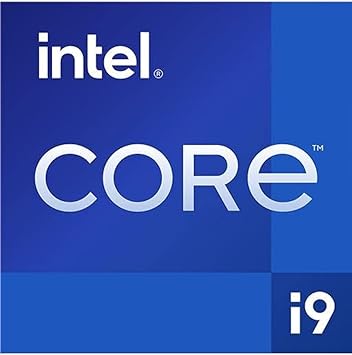Intel Core i9-12900K

The Intel Core i9-12900K processor features 16 cores and 24 threads, delivering impressive performance for demanding tasks. With a clock speed ranging from 3.2 GHz to a maximum of 5.2 GHz and a power consumption of 241 watts, it is designed for high-end computing.
Popularity: Medium
Performance:
Specifications:
Model: Intel Core i9-12900K
Series: 12th Generation Intel® Core™ i9 Processors
Architecture: Alder Lake
Socket: 1700
Cores: 16
Threads: 24
Base Clock: 3.20 GHz
Max. Boost Clock: 5.20 GHz
L2 Cache: 14 MB
L3 Cache: 30 MB
TDP: 125 W
Power Consumption: 241.0 W
Max Memory: 128 GB
Max Memory Speed: Up to DDR5 4800 MT/s, Up to DDR4 3200 MT/s
Max Temp: 100 °C
PCI Express Version: 5.0 and 4.0
PCIe Lanes: 20
Overclocking:
Integrated GPU: Yes
Cooler Boxed: no
Instruction Set: 64-bit
Launch Date: Q4'21
Manufacturer Page: Link
Review
The Intel Core i9-12900K represents a significant leap forward in high-performance computing by Intel, boasting impressive specifications that make it a formidable contender in the PC hardware market. As part of Intel’s 12th-generation Alder Lake processors, this CPU not only promises but delivers a substantial performance boost over its predecessors and its AMD counterparts.
Technical Specs and Architecture
With 16 cores and 24 threads, the Intel Core i9-12900K introduces a novel hybrid architecture that amalgamates performance cores (P-cores) and efficient cores (E-cores). This configuration enables high performance in both single-threaded and multi-threaded tasks. It supports a base clock speed of 3.20 GHz, which boosts up to a remarkable 5.20 GHz when the processor is under heavy load.
- P-Cores: Optimized for high-demand tasks such as gaming and content creation.
- E-Cores: Handle background tasks efficiently without compromising the capacity for heavier workloads.
Beyond raw performance, this CPU also features integrated Intel UHD Graphics 770, allowing for substantial graphical processing capabilities for those may not yet invest in a discrete GPU.
Performance and Benchmarks
In gaming and workstation benchmarks, the Intel Core i9-12900K has proven its prowess. It outshines even its closest AMD rivals, such as the Ryzen 9 5900X and the 5950X, by offering higher frame rates and quicker multitasking operations [Tom's Hardware].
This processor's hybrid architecture benefits from Windows 11’s enhanced scheduling, offering optimized thread allocation between P-Cores and E-Cores. This advantage allows it to maintain dominance in both gaming (26% faster in Total War: Three Kingdoms) and productive applications (33% faster in 3DMark Time Spy CPU test) [TechRadar].
DDR5 and PCIe 5.0 Support
The transition to new technologies such as DDR5 and PCIe 5.0 is a critical feature of the Intel Core i9-12900K. While DDR5 provides a higher memory bandwidth leading to significant improvements in memory-intensive applications, PCIe 5.0 sets the foundation for future accessories and peripherals that promise faster data transfer rates [AnandTech].
Power Consumption and Thermal Design
Running at a peak power of 241 watts, the Intel Core i9-12900K is power-hungry, requiring robust cooling solutions to maintain stability during intensive operations. Without adequate cooling, users might encounter thermal throttling, which compromises its otherwise stellar performance potential [TechPowerUp].
Considerations
- Pros: Exceptional performance in gaming and productivity tasks, pioneering hybrid architecture, and support for DDR5.
- Cons: High power consumption necessitates advanced cooling; early adopters need to familiarize themselves with Windows 11 for optimal functionality.
In conclusion, the Intel Core i9-12900K has asserted itself as a front-runner in modern CPU technology, redefining performance standards with its innovative design and excellent power management. Given the up-front costs associated with its required ecosystem upgrades like new motherboards and DDR5 memory, it remains a choice primarily for enthusiasts and high-end users looking for future-proofing their systems with cutting-edge technology.